This product is no longer available and has been replaced by: CR1000X.
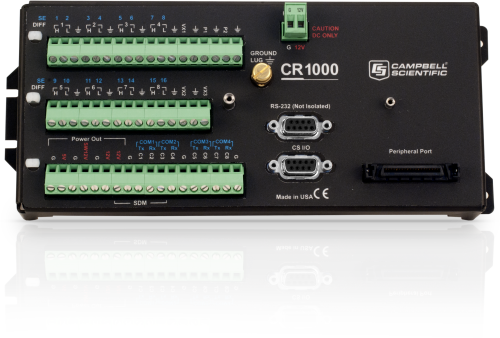
| 利用できるサービス | |
|---|---|
| 修理 | 対応 |
| キャリブレーション | 対応 |
| フリーサポート | 非対応 |
概要
CR1000 は、当社で最も広く使用されているデータ ロガーです。幅広い測定および制御機能に使用できます。過酷な条件にも耐える堅牢性と遠隔環境にも耐える信頼性を備え、複雑な構成にも耐える堅牢性も備えています。世界中のアプリケーションで使用され、データ収集システムの強力なコア コンポーネントとなります。
続きを読む利点と特徴
- 理想的なアプリケーションには、火災気象、メソネット システム、風速プロファイリング、気象観測所、空気の質、ETo/農業、土壌水分、水位/水位、養殖、雪崩予測、時間領域反射率測定、車両テスト、SCADA、水質などがあります
- 「シリアル センサおよびデバイスとのシリアル通信は、I/O ポート ペアを介してサポートされます」
- システムの頭脳としてデータを収集して保存し、周辺機器を制御します
- 柔軟な電源および通信オプションにより、遠隔地に最適です。
- 4 MB のメモリは、アドオン メモリ システムで拡張できます。
- PakBus、Modbus、SDI-12、および DNP3 プロトコルをサポート
- チャネル拡張周辺機器と互換性があり、システムを拡張できます
- セットアップに合わせて LoggerNet、PC400、または Short Cut を使用してプログラムします
- TCP/IP、電子メール、FTP、Web サーバーなど、さまざまなオプションを介して通信します。
- ガス放電管 (GDT) 保護入力
- データロガーがバッテリ電源から切断されている間も正確な時間を維持するバッテリバックアップクロック
- CR1000KD キーボードとディスプレイユニットを追加して、現場でプログラムと制御を行います。
- パルスカウント、制御ポート、シリアル通信機能を拡張するカスタム ASIC チップが含まれています
イメージ













CAD ファイル:
詳細
CR1000 は、計測・制御モジュールと配線パネルで構成されています。このデータロガーは、外部キーボード/ディスプレイと電源を使用します。低消費電力のため、CR1000 はソーラーパネルで充電したバッテリで長時間動作し、AC 電源は不要です。CR1000 は、主電源が 9.6 V を下回ると実行を一時停止し、不正確な測定の可能性を減らします。
CR1000 のモジュールは、センサを測定し、直接通信と電気通信を駆動し、データを縮小し、外部デバイスを制御し、データとプログラムをオンボードの不揮発性ストレージに保存します。電子機器は RF シールドされ、密閉されたステンレス製のキャニスタによってグリッチから保護されています。バッテリバックアップ クロックにより、正確な時間管理が保証されます。モジュールは、測定機能と通信機能を同時に提供できます。オンボードの BASIC のようなプログラミング言語は、データ処理と分析ルーチンをサポートします。
CR1000WP は、すべての CR1000 モジュールと互換性のある黒色の陽極酸化アルミニウム配線パネルです。配線パネルには、切り替え可能な 12 V の再分配アナログ グランド (グループ化ではなくアナログ チャネル間で分散)、12 V 接続用の取り外し可能な端子ブロック、ガス管スパーク ギャップ、および COM シリーズの電話モデムやその他の周辺機器に電力を供給するピン 8 の 12 V 電源が含まれています。制御モジュールは配線パネルから簡単に取り外すことができるため、センサを再配線することなく現場で交換できます。
当初、標準の CR1000 には 2 MB のデータ/プログラム ストレージがあり、オプション バージョンの CR1000-4M には 4 MB のメモリがありました。2007 年 9 月、標準の CR1000 に 4 MB のメモリが搭載されるようになり、CR1000-4M は廃止されました。シリアル番号が 11832 以上のモジュールを搭載したデータ ロガーには 4 MB のメモリが搭載されます。 4 MB データ ロガーには、キャニスターに「4M メモリ」と記載されたステッカーも貼られています。
仕様
| -注意- | その他の仕様は、CR1000 仕様シートに記載されています。 |
| 動作温度範囲 |
|
| アナログ入力 | 16 個のシングルエンドまたは 8 個の差動 (個別設定) |
| パルス カウンター | 2 |
| 電圧励起端子 | 3 (VX1 ~ VX3) |
| 通信ポート |
|
| スイッチド 12 ボルト | 1 個の端末 |
| デジタル I/O |
|
| 入力制限 | ±5 Vdc |
| アナログ電圧精度 | ±(読み取り値の 0.06% + オフセット) @ 0° ~ 40°C |
| ADC | 13-bit |
| 電源要件 | 9.6 ~ 16 Vdc |
| リアルタイム クロックの精度 | 年間 ±3 分 (Correction via GPS optional.) |
| インターネット プロトコル | FTP、HTTP、XML、POP3、SMTP、Telnet、NTCIP、NTP |
| 通信プロトコル | PakBus、Modbus、DNP3、SDI-12、SDM |
| 保証 | 3 年 |
| CPU 使用率と最終ストレージ用のバッテリ バックアップ SRAM | 4 MB |
| アイドル電流ドレイン、平均 | < 1mA (@ 12 Vdc) |
| アクティブ電流ドレイン、平均 |
|
| 寸法 |
|
| 重量 | 1.0 kg (2.1 lb) |
互換性
注意: 以下は代表的な互換性情報を示しています。互換性のある製品や互換性のない製品をすべて網羅したリストではありません。
Software
| 製品 | 互換性 | 注意 |
|---|---|---|
| LoggerNet | バージョン3.0以上 | |
| PC200W (リタイア) | ||
| PC400 | バージョン1.2以上 | |
| PCONNECT (リタイア) | バージョン3.1以上 | |
| PCONNECTCE (リタイア) | バージョン2.0以上 | |
| RTDAQ | バージョン1.0以上 | |
| Short Cut | ||
| VISUALWEATHER | バージョン2.0以上 |
その他
| 製品 | 互換性 | 注意 |
|---|---|---|
| SDM-SIO2R |
互換性に関する追加情報
センサ
複数のチャンネル タイプを備えた CR1000 は、熱電対、SDI-12 センサ、4 ~ 20 mA センサ (CURS100 などの端末入力モジュール経由) など、ほぼすべてのセンサと互換性があります。カスタム ASIC チップにより、パルス カウント、制御ポート、シリアル通信機能が拡張されます。CR1000 の I/O ポートは送信と受信としてペアリングでき、シリアル センサやデバイスとのシリアル通信が可能です。
計測・制御周辺機器
CR1000 は、当社のすべての CDM (SC-CPI が必要)、SDM、マルチプレクサ、バイブレーティングワイヤ インターフェイス、端末入力モジュール、リレーと互換性があります。
通信
CR1000 は、直接接続、イーサネット インターフェイス、マルチドロップ モデム、短距離モデム、電話モデム (固定電話、デジタル セルラー、音声合成)、RF テレメトリ、衛星送信機 (Argos、Iridium、Inmarsat) を介して PC と通信します。
データは、CR1000KD キーボード ディスプレイ、キーボード付き CD100 マウント可能ディスプレイ、iOS または Android デバイス (LoggerLink が必要)、CD295 DataView II ディスプレイ、またはユーザー提供の PDA (PConnect または PConnectCE ソフトウェアが必要) で表示できます。
互換性のある外部データ ストレージ デバイスは、CFM100、NL115、および SC115 です。
屋外収納ケース
CR1000 とその電源は、当社の標準屋外収納ケース(ENCシリーズ)に収納できます。
電源
12 Vdc 電源であれば、CR1000 データロガーに電力を供給できます。CR1000 でよく使用される電源は、BPALK、PS150、および PS200 です。BPALK は、20°C で 7.5 Ah 定格の非充電式 単一型アルカリ乾電池 8 本を提供します。
PS150 と PS200 はどちらも、密封された充電式 7 Ah 電池と充電レギュレータで構成されています。これらの電池は、充電源 (壁の充電器またはソーラー パネル) に接続する必要があります。これら 2 つの電源は、充電レギュレータが異なります。PS150 には標準レギュレータがあり、PS200 にはマイクロ コントローラ ベースのスマート レギュレータがあります。PS200 のレギュレータは、2 段階の定電圧充電と温度補正を提供し、電池の充電を最適化して電池の寿命を延ばします。
また、それぞれ公称定格が 12 Ah と 24 Ah の BP12 および BP24 バッテリパックも利用できます。これらのバッテリは、規制された充電源 (規制されていないソーラーパネルまたは壁の充電器に接続された CH100 または CH200 など) に接続する必要があります。
ソフトウェア
CR1000 の完全なプログラミング言語である CRBasic は、単純なプログラミングや複雑なプログラミング、および多くのオンボード データ削減プロセスをサポートします。
ドキュメント
テクニカルペーパー
- Data Streaming
- Benefits of Input Reversal and Excitation Reversal for Voltage Measurements
- Preventing and Attacking Measurement Noise Problems
- DNP3 with Campbell Scientific Dataloggers
- Voltage Measurement Accuracy, Self-Calibration, and Ratiometric Measurements
- BACnet to Modbus Protocol Conversion (App. Note: 1M-C)
- Irrometer 950R1-O/950T Radio Network (App.Note: 3MI-F)
- AlphaGUARD Radon Monitor Interfaced with the CR1000 Datalogger
- Serial Sensors: Interfacing with CSI Dataloggers (App. Note Code: 2MI-V)
- CF Card Information (3SM-F)
動画とチュートリアル
ダウンロード
CR1000 OS v.32.07 (4.60 MB) 15-05-2024
Execution of this download installs the CR1000 Operating System and Compiler on your computer. It also updates the CR1000 support files for the CRBasic Editor.
Note: This OS has crossed the 2 Meg CR1000 size limit for remote download. The OS must be downloaded to the 2 Meg CR1000 via direct connect with the Device Configuration Utility. All OS download methods are supported by the 4 Meg CR1000.
Upgrading from versions prior to version 28 of the Operating System will reset the datalogger’s CPU drive. This is due to a change in the format of the file system from FAT16 to FAT32. In order for the datalogger to operate correctly, as part of the upgrade, the CPU drive is formatted to FAT32. Any programs stored and running from the CPU drive will be lost. It is not recommended to update the datalogger’s Operating System over a remote connection where program control regulates the communication equipment (turning it on or off, etc.). In these cases, an on-site visit and a backup using DevConfig’s backup utility is necessary to update the datalogger’s Operating System.
Watch the Video Tutorial: Sending an OS to a Local Datalogger.
In all cases where the datalogger is being updated from an Operating System prior to 28, the use of DevConfig’s backup utility is recommended due to the CPU drive being formatted using the new FAT32 format.
Device Configuration Utility v.2.32.01 (47.7 MB) 15-04-2025
A software utility used to download operating systems and set up Campbell Scientific hardware. Also will update PakBus Graph and the Network Planner if they have been installed previously by another Campbell Scientific software package.
Supported Operating Systems:
Windows 11 or 10 (Both 32 and 64 bit)
よくある質問
CR1000に関するよくある質問の数: 184
すべて展開すべて折りたたむ
-
No. The NL120 is used for one device only.
-
Yes. Each COM port has individual settings and buffers.
-
50 Hz rejection is available for analog voltage measurements by setting the Integration parameter.
-
This message indicates that the data logger had to reconfigure and delete final storage data. The data tables are recreated, thus causing the historical data to be deleted. This message is only seen if programs are sent or restarted either by the File Control options to start/stop a program, or if the program is sent from the CRBasic Editor. If a program is sent from the Connect screen, this message is not displayed, but final storage data on the data logger is deleted. Remember to collect data before sending or starting a program.
-
No. Configurations can be changed, however, via any other mode of communication with the data logger.
-
In OS 24, any delay in the CR1000 communication while reading a server certificate is because the data logger has to work its way through the certificate and set up the encryption to continue with secured communication. This speed depends on the processing power of the data logger.
-
Without expansion peripherals, the CR1000 can handle five RS-232 devices. With expansion peripherals, it is possible to have 22 RS-232 devices connected.
-
Yes. The CR1000 could be set up as a SDI-12 sensor using the SDI12SensorSetup() instruction. Alternatively, the CR1000 could be set up to perform serial communications with the CR3000 by connecting a COM1─COM4 port pair and ground from one data logger to a COM1─COM4 port pair and ground on the other data logger. The COM1─COM4 port lines need to cross RX to TX and vice versa.
ケーススタディ
Tropical volcanic islands are biodiversity hotspots where the Critical Zone (CZ) remains poorly studied. In......続きを読む
背景 2022 年、ECR Medio Ambiente は、以前は別のエンジニアリング会社が管理していたサグラダ ファミリア大聖堂の構造監視設備の監視責任を引き受けました。キャンベル サイエンティフィックのさまざまな機器を組み込んだ監視システムは、この象徴的な建築傑作の構造的完全性を確保することを目的としていました。 課題 この移行には、特定のセンサーとその配線を識別するという大きな課題がありました。適切なラベルと校正シートがなかったため、最初から設備の詳細な在庫と分類を維持することが極めて重要であることが浮き彫りになりました。 解決策 包括的な設備には、亀裂計、圧力セル、気象観測所、加速度計、ガス検知器などのさまざまな地質工学機器が含まれていました。さまざまな周波数でデータを収集するこれらの機器は、2008 年以来、大聖堂の構造状態を追跡する上で重要な役割を果たしてきました。ECR Medio Ambiente は、その専門知識を活用して、構造モニタリングの責任を統合し、引き継ぎました。同社は、RAD10、イーサネット アダプター (NL121)、AVW200、AM16/32、CR800、CR1000、CR1000X、WindSonic、電気キャビネット/エンクロージャなどのセンサーの正確な識別とラベル付けを確実に行う徹底した在庫および分類プロセスを実施しました。キャリブレーション シートは細心の注意を払って維持されました。 メリットと影響 構造的健全性の継続:......続きを読む
概要 ショーヴェ=ポンダルク洞窟とアヴァンドルニャック洞窟には、芸術的、技術的に類まれな美しさを誇る先史時代の宝物が眠っています。洞窟を飾る絵画や彫刻は 360 世紀も前のもので、現在知られている遺跡の中でも最古の部類に入ります。これらの洞窟の並外れた重要性から、ユネスコの世界遺産に登録されました。1994 年に発見されてすぐに、洞窟の自然環境を保護し、訪問や研究による影響を最小限に抑えるための予防保全措置が講じられました。保存を確実にするためには、微気候パラメータの制御が不可欠であり、高精度の気象監視が必要です。 解決策 Campbell Scientific は、これらの複雑な課題に対応する完全なソリューションを提供しました。ショーヴェ ポン ダルク洞窟とアヴァン ドルニャック洞窟にはセンサー システムが設置され、CR3000 計測および制御データロガーを使用して温度、気圧、CO2 などのパラメーターを測定しました。地上では、降雨量、温度、気圧などの屋外パラメーターを測定するために CR1000 計測および制御データロガーが設置されました。さらに、CR3000 と同じセンサーを備えた同一のミラー......続きを読む
2013 年、ルイジアナ州南部の歴史的な家屋の隣に陥没穴が出現しました。その後数か月で、陥没穴は深さ 30.5 メートル (100 フィート)、幅 61 メートル (200 フィート) にまで拡大しました。RESPEC は、不安定になる可能性のある斜面を監視するために、2014 年初頭に堅牢な伸縮計システムを設計、製造、設置しました。RESPEC は、システムのバックボーンとして、Campbell Scientific......続きを読む
CS110 電界計は、地球の晴天時の電位勾配のカーネギー曲線を再現します。 INESC TEC は、海洋境界層における宇宙大気海洋相互作用 (SAIL) プロジェクトの一環として、ポルトガル海軍と共同で、サグレス スクール シップの装備を支援しています。この船は、大気電気と気候変動に関する先駆的な研究を可能にする真の科学実験室へと変貌を遂げつつあります。 Campbell Scientific は、INESC TEC が地球表面の大気電界の垂直成分を測定できるように電界計センサーを供給しました。計画されている 1 年間に及ぶ世界一周航海で収集された地球物理学的データにより、科学者は気候変動や大気汚染の増加が地球全体の電気回路に与える影響を研究することができます。また、データは長期的な気象モデルに情報を提供し、将来の気候傾向をより正確に予測することもできます。 カーネギー曲線 カーネギー曲線は、地球の晴天時の大気電界の毎日の周期を広く表しています。清浄な空気では、測定位置に関係なく、世界時に従う平均的な毎日の変動を示します。 カーネギー曲線は、大気電気測定を現在でも比較するための基準変動を提供するため重要です。これは、地球上のさまざまな気象擾乱地域に関連する大気帯電の昼間の変動に起因すると考えられています。 ミッション この航海の科学的目的の 1......続きを読む
問題 ラフタ タワーは、フィンランド湾岸の社会およびビジネス用途向けに 2018 年に完成した建物です。現在、高さ 462 メートル (1,515.75 フィート) でヨーロッパで最も高い超高層ビルであるため、建設プロセスの前、最中、後に高品質のデータを取得することが重要でした。 データ収集システムは完全に自動化され、請負業者のオフィスにデータを送信できる必要がありました。ボックス基礎ひずみ監視システムは、タワーの構造健全性監視の中で最も野心的で複雑なサブシステムです。これは、 2015 年に世界最大の鉄筋コンクリート構造物 (19,600 m 3 [25,635.83......続きを読む
港珠澳大橋(HZMB)は、高架橋、斜張橋、沈没トンネル、人工島で構成され、珠海、マカオ、香港を結ぶ全長29.6km(18マイル)の橋です。HZMBを香港の高速道路交通網に効果的に接続するために、香港でも一連の交通施設が整備されました。 香港連絡道路 (HKLR) は、こうした交通施設の 1 つです。全長約 12 km (7 マイル) の 3 車線の高速道路と路肩で構成され、香港特別行政区の境界にある香港特別行政区境界管理局と香港国際空港島の北東海域にある香港境界通過施設を結びます。 構造ヘルスモニタリング (SHM) とメンテナンス管理システム (MMS)......続きを読む
スティーブ・ロジャーズ氏は、メリーランド大学ボルチモア郡校 (UMBC) の海洋環境技術研究所水産養殖研究センターの研究室長です。研究室には、溶存酸素アラームまたは温度アラームが発生したことをスタッフに知らせる電話ダイヤラーを備えた既存のアラーム システムがありました。実際のアラーム状態を確認するには、研究室の誰かが研究室に応答する必要がありました。このシステムでは、CR1000 データロガー、MD485 インターフェイス、および AM16/32 マルチプレクサが使用されています。 UMBC は研究室のモニタリング システムに欠陥があることを示す調査を実施し、その問題に対処する必要がありました。Campbell Scientific の本社は、長年 Campbell Scientific 製品を統合してきた......続きを読む
記事とプレスリリース
ブログ記事
-
But It’s a Dry Heat… like a Furnace

21-06-2021 著者: Dirk Baker -
It’s Time to Embrace the Hybrid

02-12-2019 著者: Kevin Rhodes -
How to Monitor Your Campbell Cellular Modem Data Usage: Part 2

30-01-2019 著者: Nathanael Wright -
Campbell Core Technology: Data Logger Analog Measurement Uncertainty

17-05-2018 著者: Kevin Rhodes -
New Product Support: Kipp & Zonen’s RaZON+

17-01-2018 著者: Matt Perry -
Integrated Peripherals: Expansion made easy

29-11-2017 著者: Timothy Jeppsen -
Replacing Your CR1000 Datalogger with a CR1000X: What You Should Know

11-10-2017 著者: Timothy Jeppsen -
A Quick Comparison of the CR1000X, CR1000, and CR6 Dataloggers

16-08-2017 著者: Timothy Jeppsen -
The CR1000X: A New Generation of Data Loggers with Proven Functionality

02-08-2017 著者: Timothy Jeppsen -
Sending Email from Your Data Logger Just Got Easier!

25-01-2017 著者: Dana Worley -
Available Security Measures for Internet-Connected Data Loggers

07-12-2016 著者: Dana Worley -
Using Internet Data to Promote Outdoor Safety

04-11-2015 著者: Barbra Utley
ニュースレター記事
- Celebrate with Us! 24-01-2018
- Case Study: PGA Tour Lightning Warning System 28-10-2016
- Case Study: High-Elevation Weather in Peru 21-07-2016
- Case Study: Geothermal Development in Colombia 02-02-2016
- Case Study: Dam Monitoring in Puerto Rico 02-02-2016
- Case Study: Webcams in New Hampshire Forest 15-10-2015
- Case Study: Cavern Collapse Alarm 21-07-2015
- Case Study: University of Toronto Green Roof Research 21-07-2015
- Case Study: South Africa Solar Prospecting 14-04-2015
- Case Study: Washington AgWeatherNet 14-04-2015
- Powerful New Operating System for CR800, CR1000, CR3000 04-02-2015
- Case Study: Solar-Energy Assessment in Chile 20-10-2014
- Case Study: Florida Endangered Species 30-07-2014
- Case Study: South Dakota Irrigation Update 30-07-2014
- Case Study: Flood Warning in Arkansas 15-10-2013
- Case Study: Preventing Road Damage from Freezing Conditions in South Korea 09-05-2013
- Case Study: Florida Water Diversion Control 18-10-2012
- Case Study: North Carolina “Green” Hotel 18-10-2012
- Case Study: Station Provides Flood Warning & Road Weather Data 17-08-2012
- Case Study: Researching Glacier Retreat in the Andes 17-08-2012
- New Operating System for CR800, CR1000, CR3000 17-08-2012
- Case Study: Water-Supply SCADA System 15-03-2012
- Case Study: Post-Tensioned, Fiber-Reinforced Bridge 16-11-2011
Privacy Policy Update
We've updated our privacy policy. 詳細はこちら
Cookie Consent
Update your cookie preferences. クッキーの設定を更新する








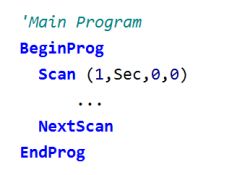
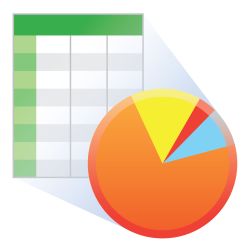



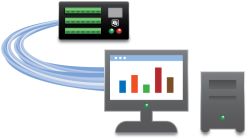












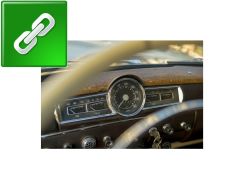





![データロガーのオペレーティング システム (OS) を更新する 2 部構成シリーズの第 1 部。データロガーとコンピューター間の直接接続と、デバイス構成ユーティリティの [OS の送信] タブを使用する更新方法の 1 つをデモンストレーションします。 os をローカル データロガーに送信する方法 (パート 1)](https://img.youtube.com/vi/Wm16Pjp-V2w/mqdefault.jpg)

![データロガーのオペレーティング システム (OS) を更新する 2 部構成のシリーズの第 2 部です。[接続] 画面からファイル コントロールを使用する更新方法の 1 つをデモンストレーションします。この方法は、すでに導入されていて、携帯電話や IP リンクなどの通信リンク上にあるリモート データロガーに適しています。<br /><br />
<b>重要:</b> このビデオは、シリアル番号が 7501 より大きい CR6 データロガー、CR300、または CR1000X には適用されません。 リモート データロガーへの os の送信方法 (パート 2)](https://img.youtube.com/vi/0uMY9ddZ9OE/mqdefault.jpg)













